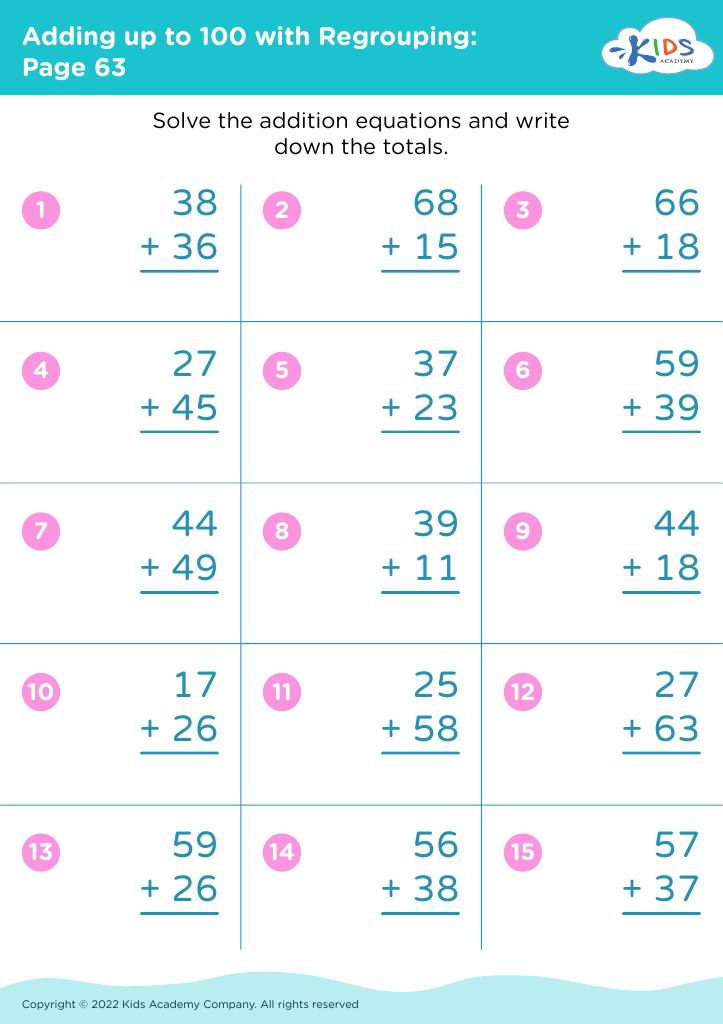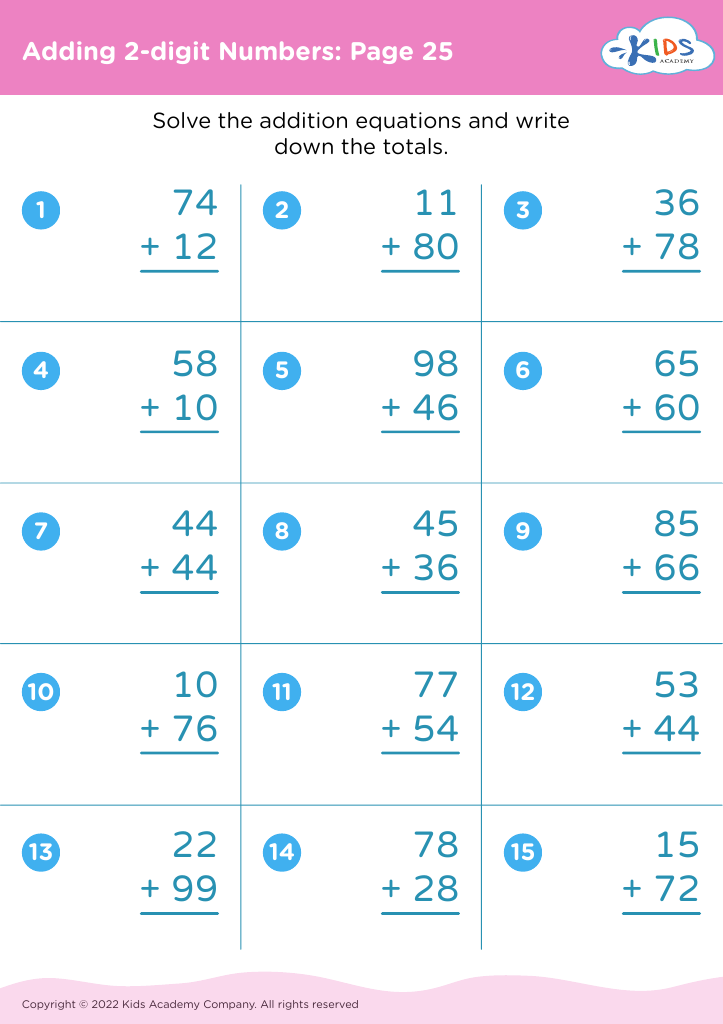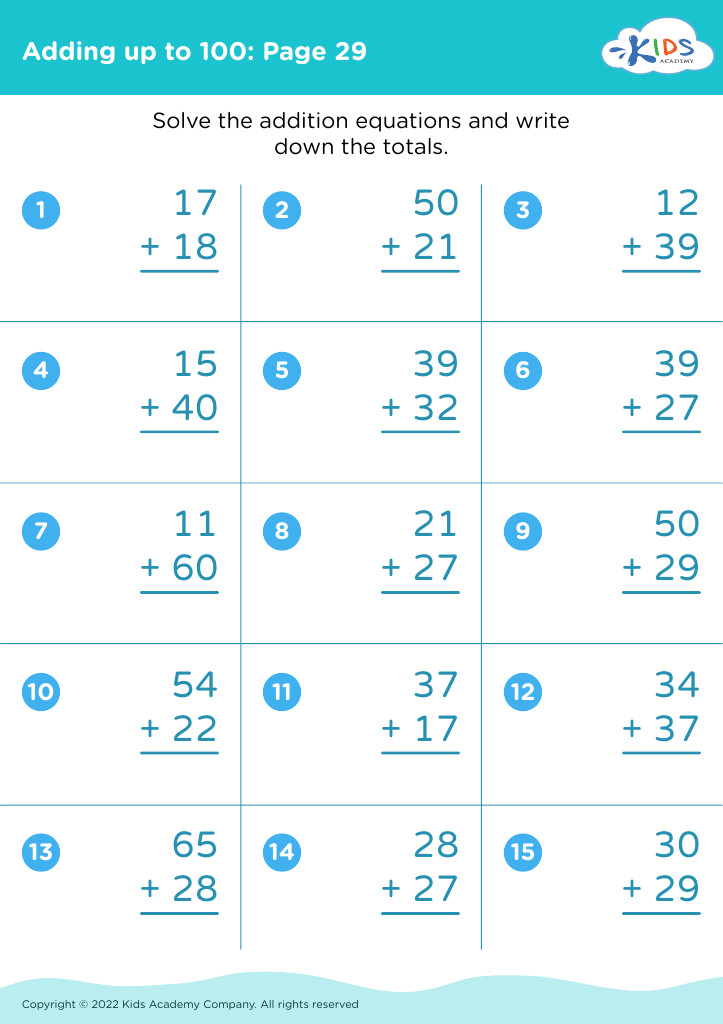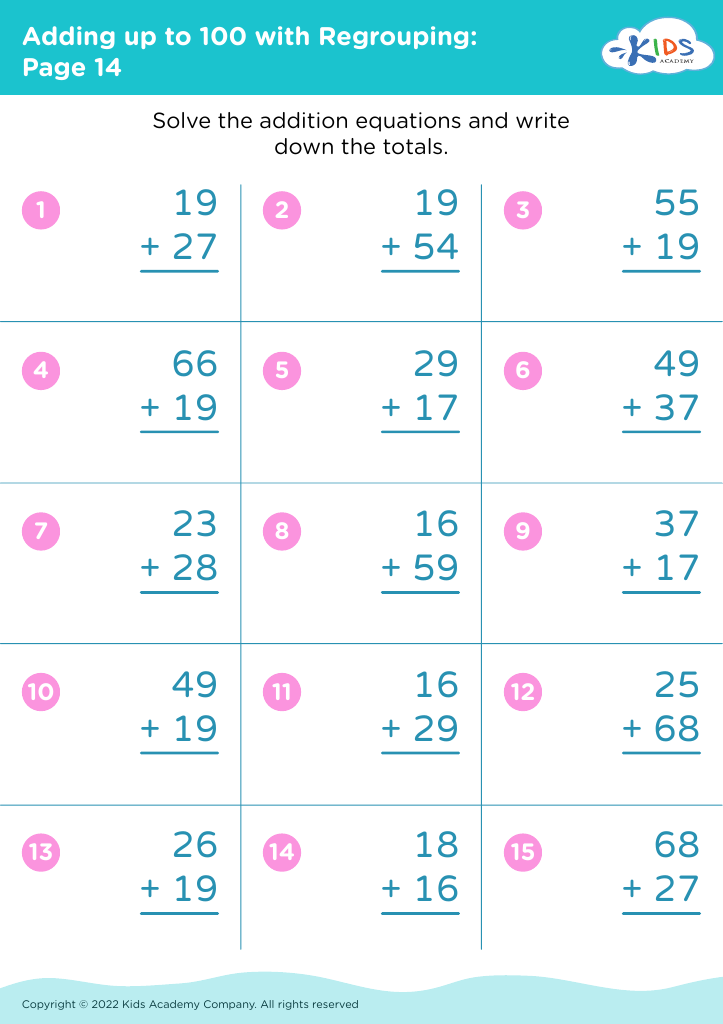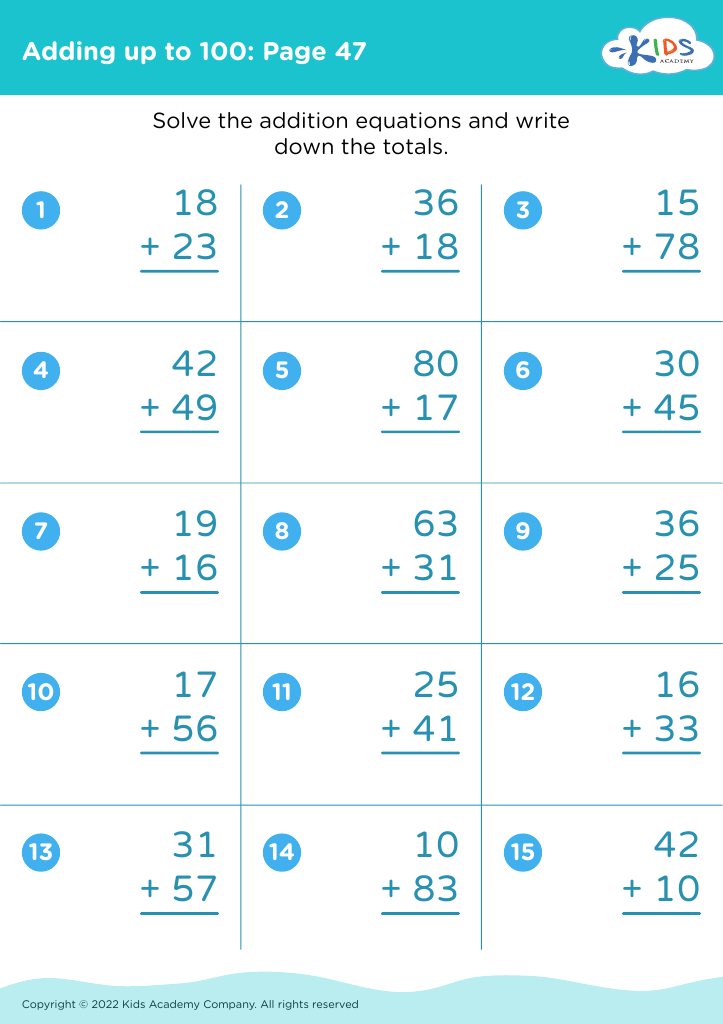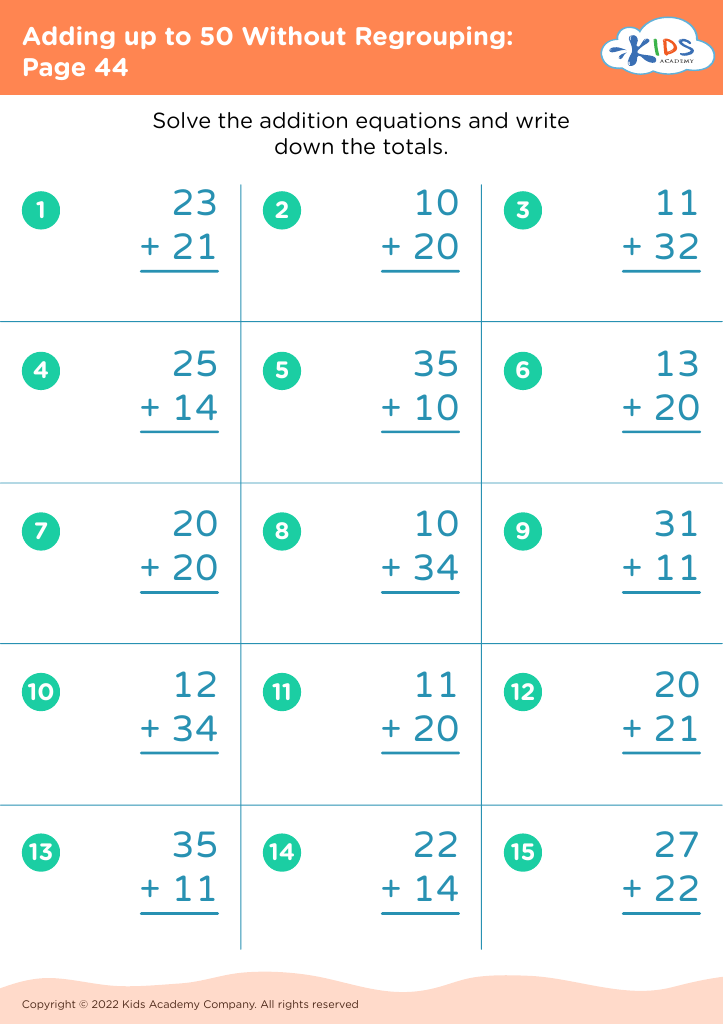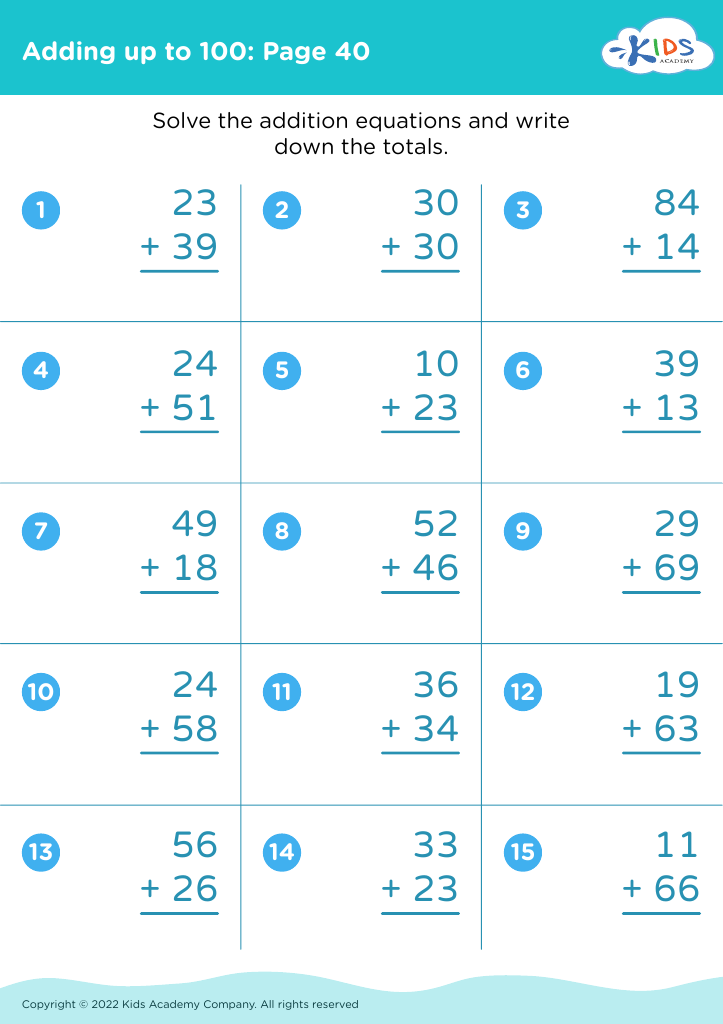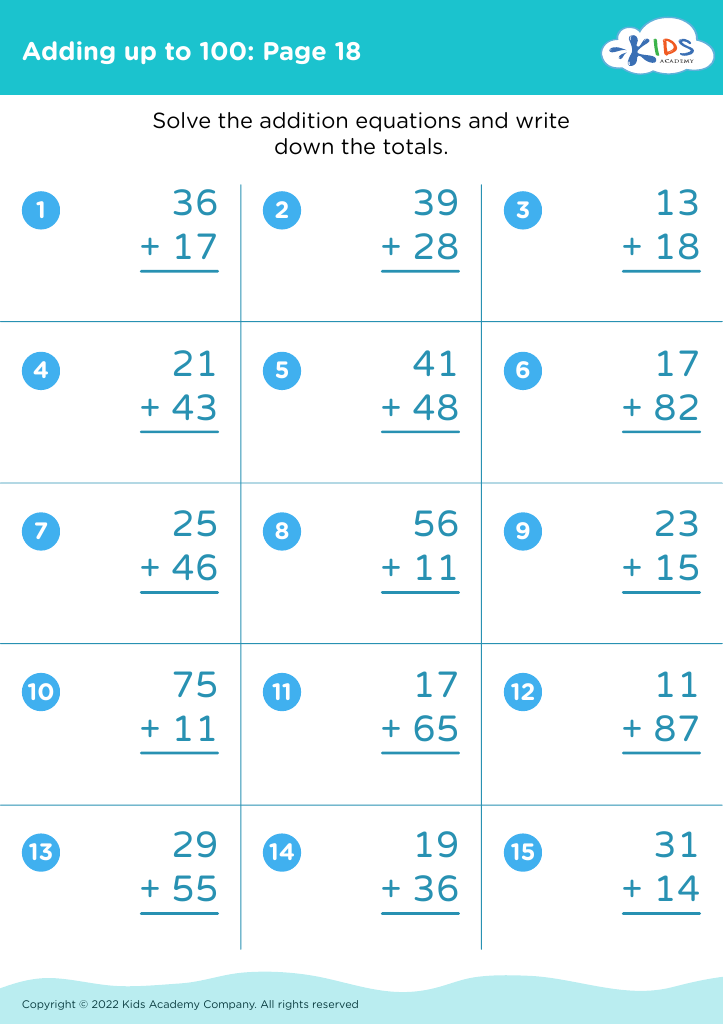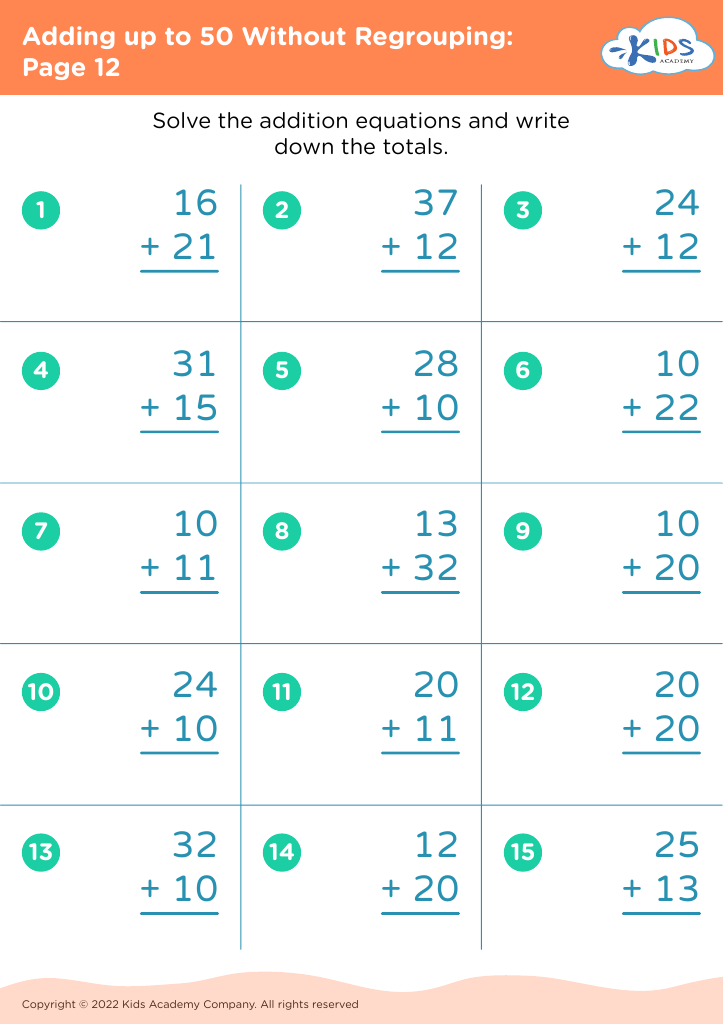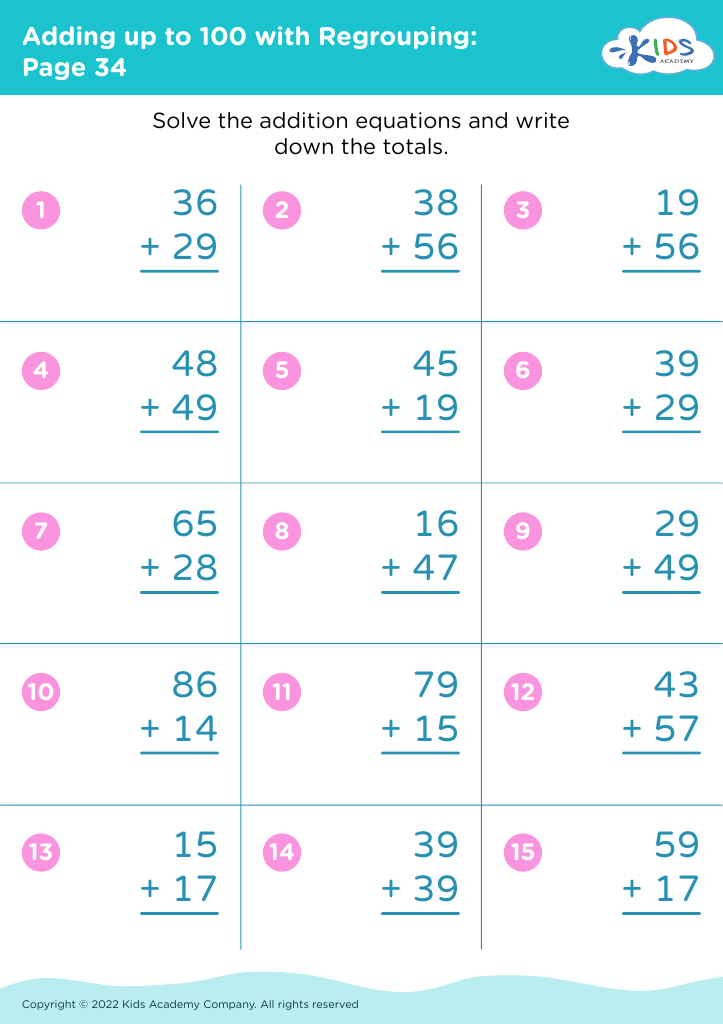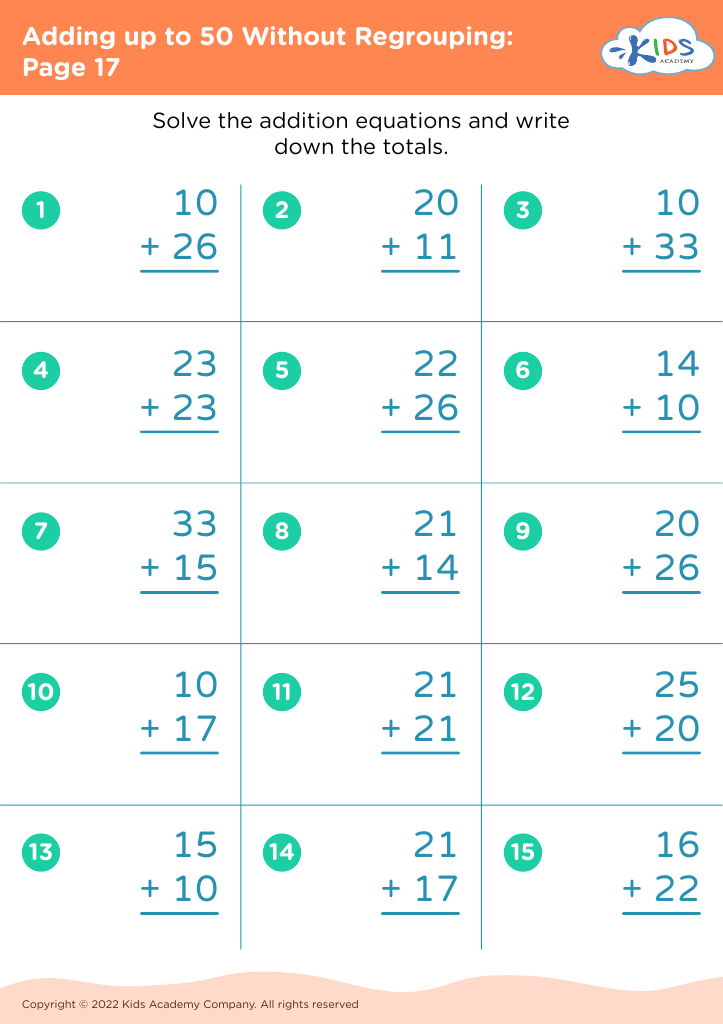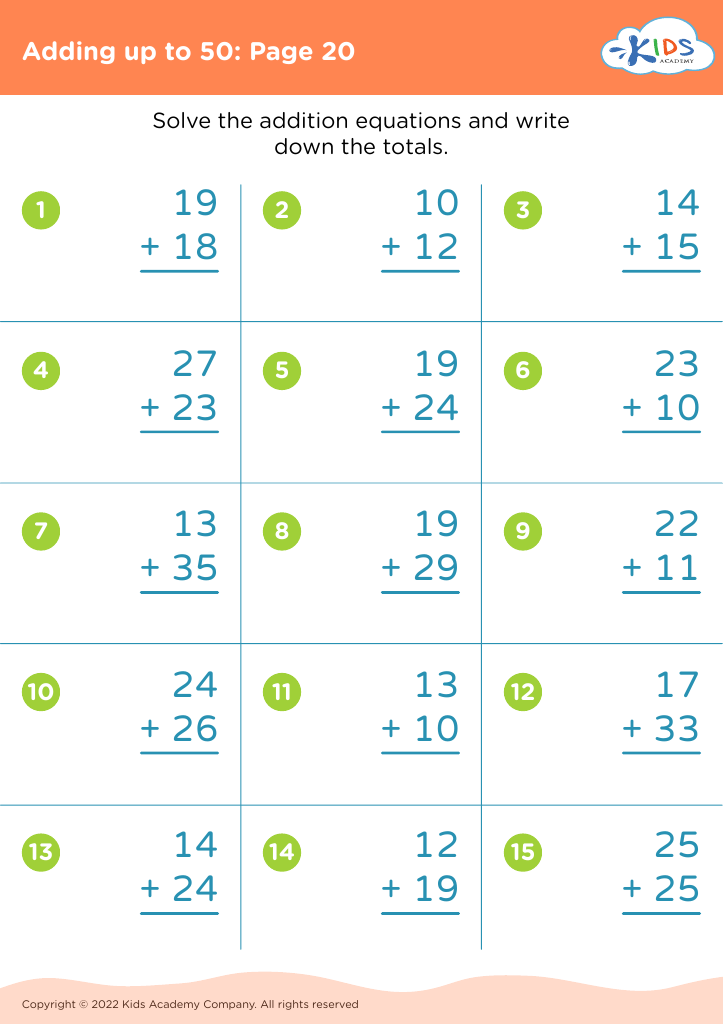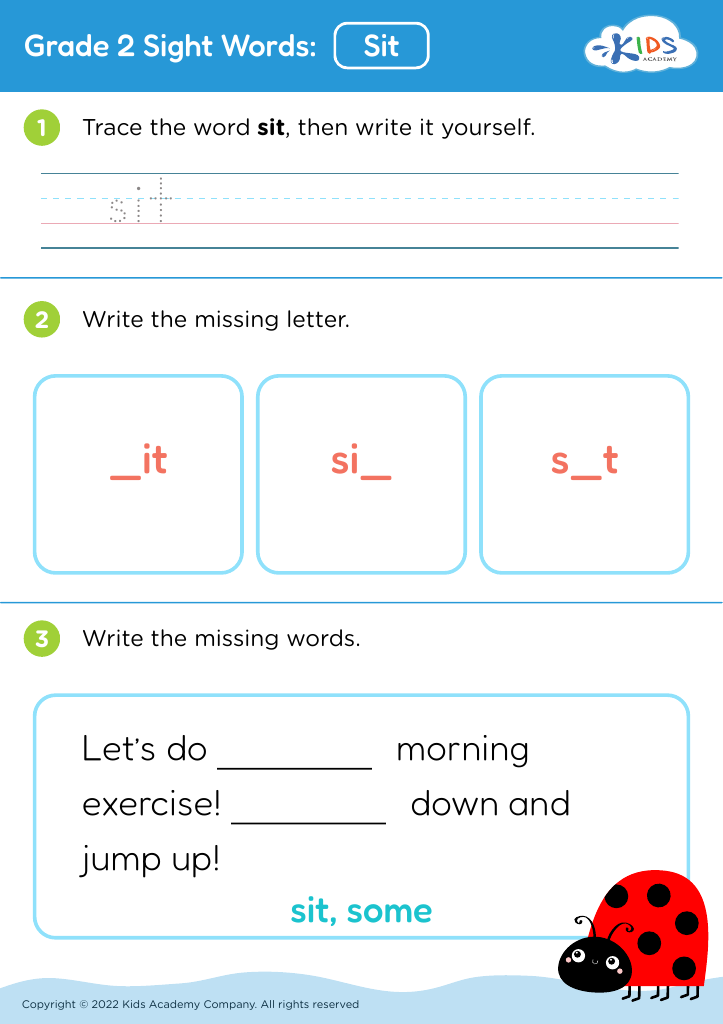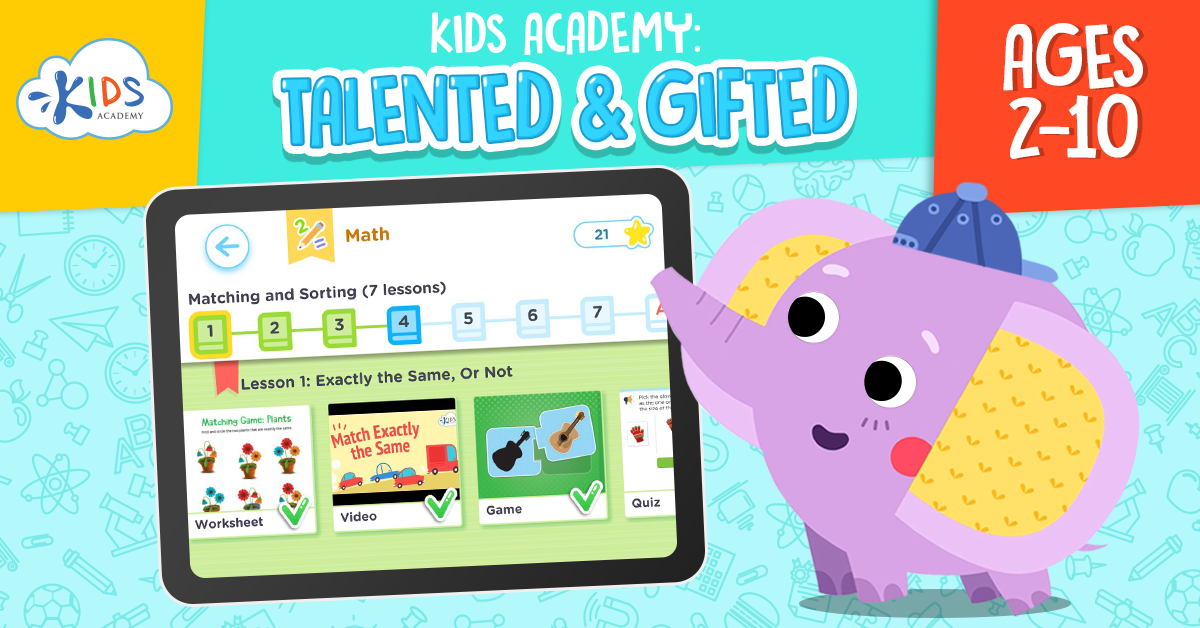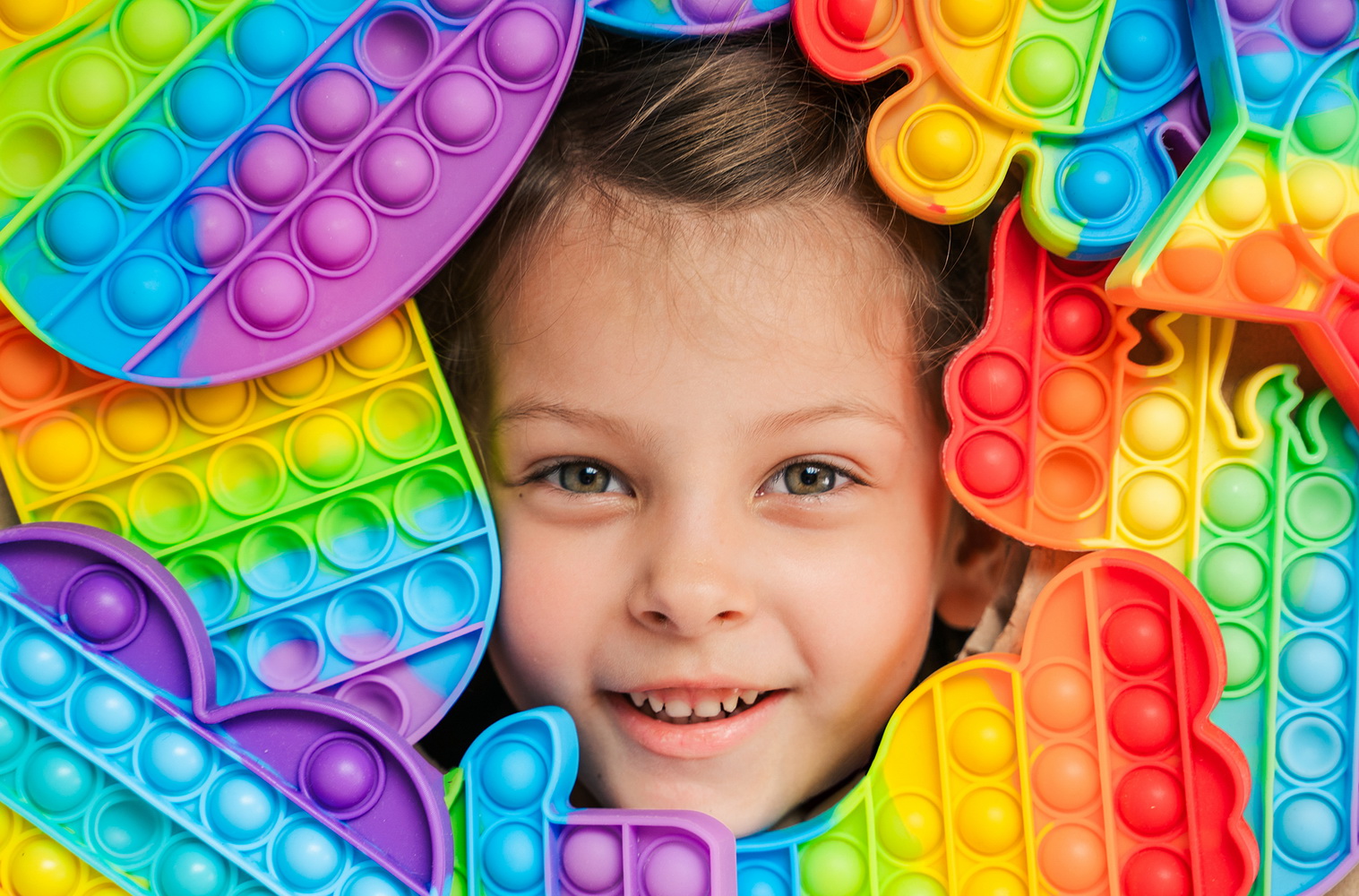Enhance number recognition Worksheets for Ages 5-8
20 filtered results
-
From - To
Unlock your child's potential with our "Enhance Number Recognition Worksheets for Ages 5-8." Designed to make learning numbers fun and effective, these worksheets offer an engaging mix of activities from counting and tracing to fun puzzles that build a strong mathematical foundation. Perfect for preschoolers and early learners, each sheet aligns with educational standards to ensure progress matches their school curriculum. Our worksheets enhance fine motor skills, boost counting confidence, and develop early math proficiency. Give your child the tools they need to excel and turn number learning into an exciting adventure! Suitable for home or classroom use.
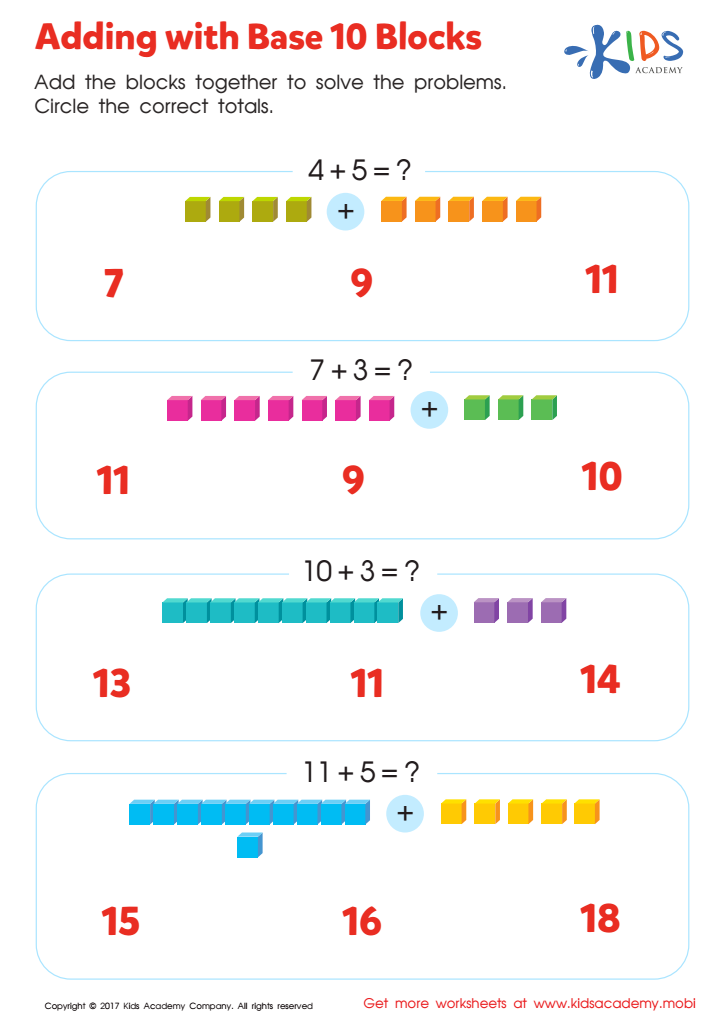

Adding with Base Ten Blocks Worksheet
Enhancing number recognition for children aged 5-8 is foundational for their future success in mathematics and related skills. At this formative stage, young learners' brains are highly receptive to new information. Number recognition builds the groundwork for more complex mathematical operations such as addition, subtraction, multiplication, and division. When children recognize and differentiate numbers easily, it sets a positive trajectory for their academic journey and boosts their confidence.
Parents and teachers play pivotal roles in this developmental phase. For parents, engaging in playful activities that incorporate numbers, such as counting objects at home, playing board games, or using numbered charts, can make learning fun and seamless. Such involvement also strengthens parent-child bonding and establishes a positive attitude towards learning.
Teachers, on the other hand, can leverage classroom resources and innovative teaching methods to enhance number recognition. Activities like using visual aids, peer-group learning, and educational games make learning interactive and impactful. Additionally, early identification of difficulties in number recognition allows for timely interventions, supporting children who might struggle.
In summary, fostering strong number recognition skills in early childhood nurtures cognitive development, enhances problem-solving abilities, and paves the way for academic success, making it a fundamental focus for parents and educators alike.
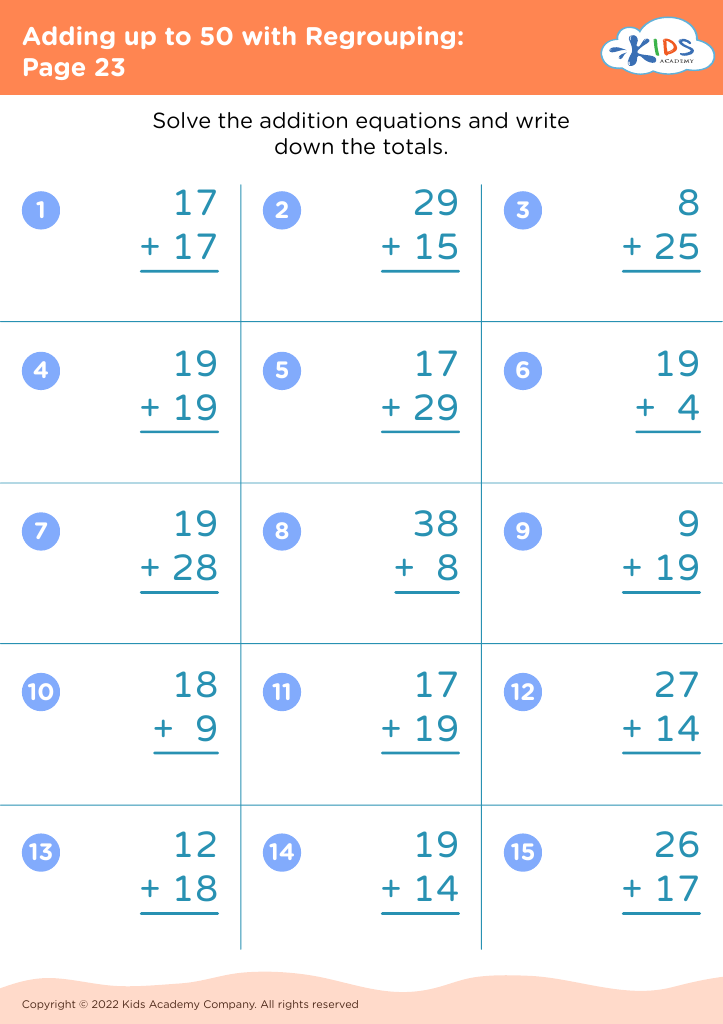

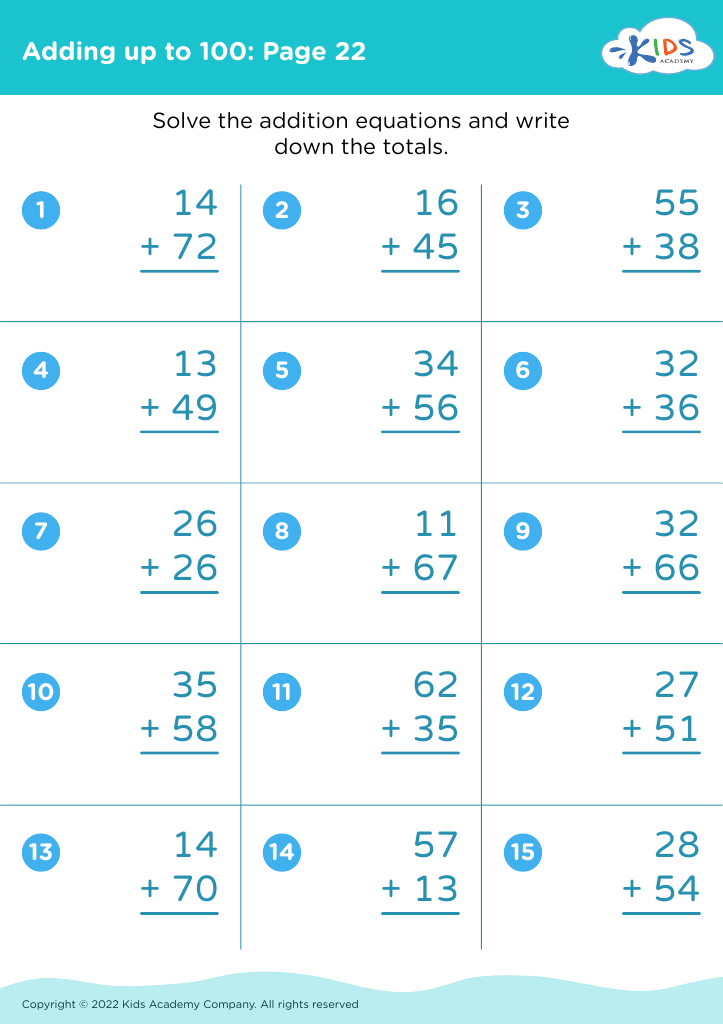
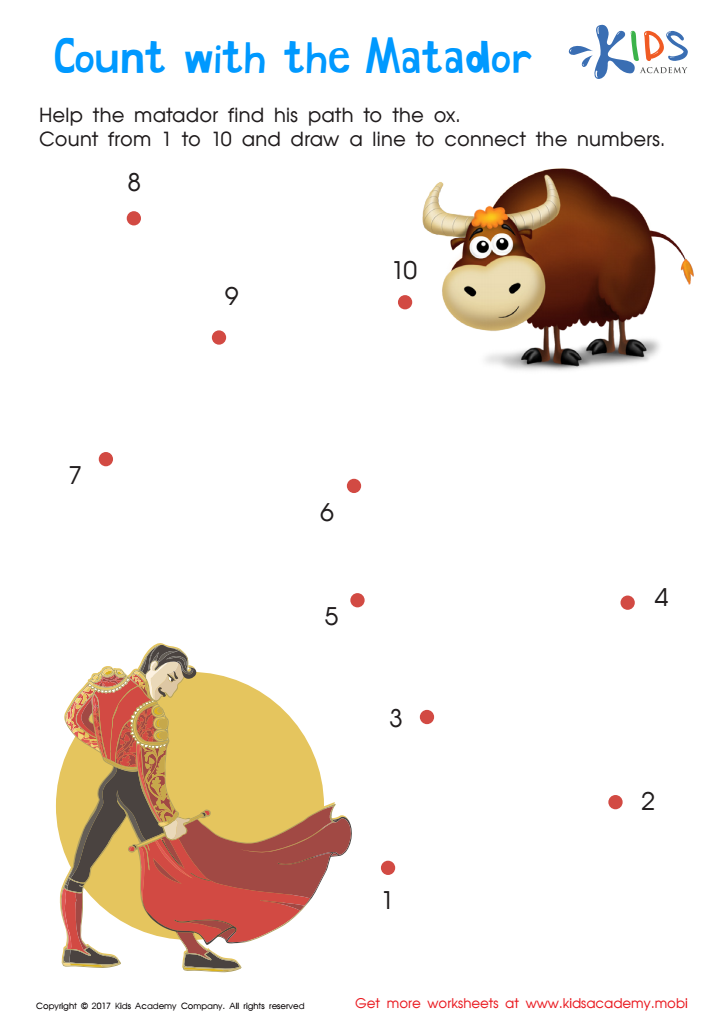
 Assign to My Students
Assign to My Students
